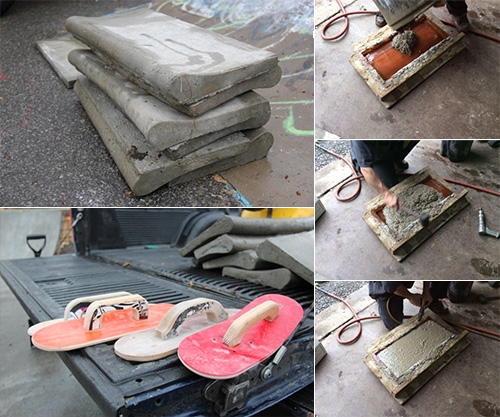
Coping
Kevin Cann sent in some pics of homemade concrete coping he pours from a mould he made from a 2 part rubber mix of an existing block. He oils the mold up with a little motor oil before adding a high strength concrete, and then vibrates the mold to settle the mix and eliminate as many bubbles as possible. 12 hours later he pops it out and cures it in water for 5 days.
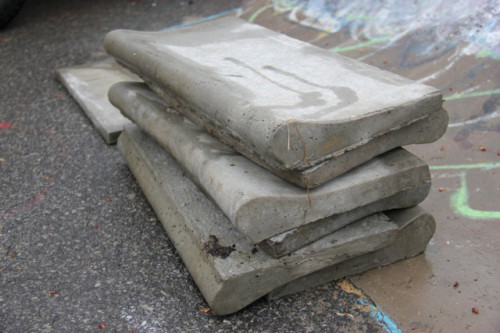
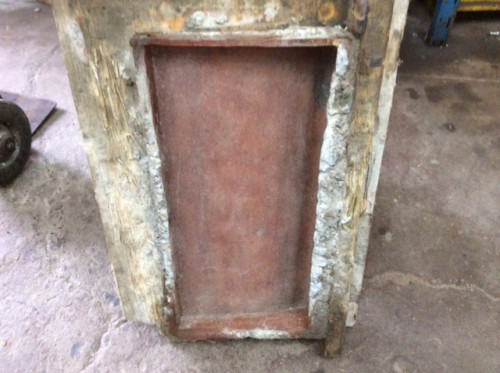
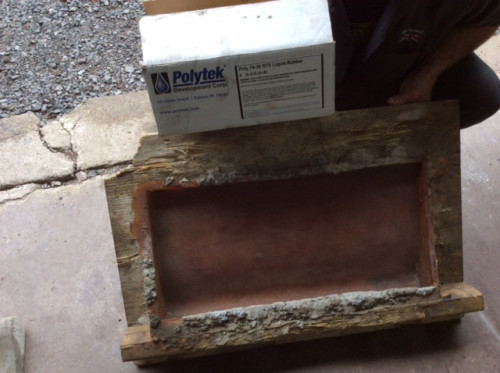
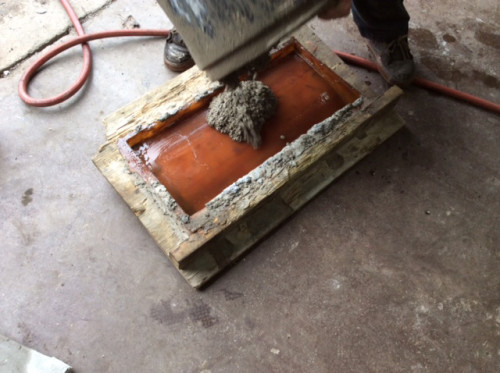
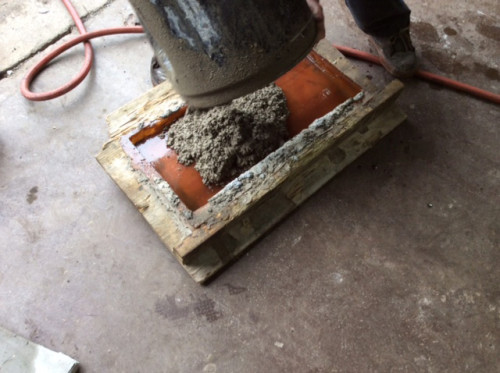
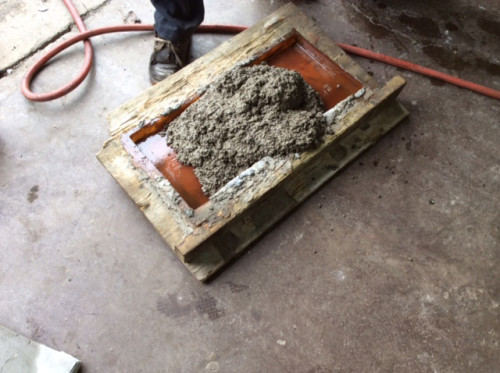
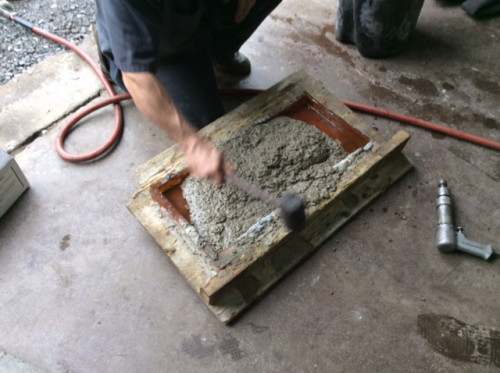

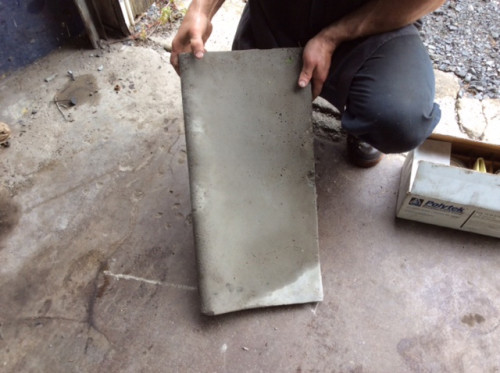
Want more concrete to grind? Check out the DIY parking block.
As an aside, here’s some homemade floats made by Kevin’s friend Michel Skart,
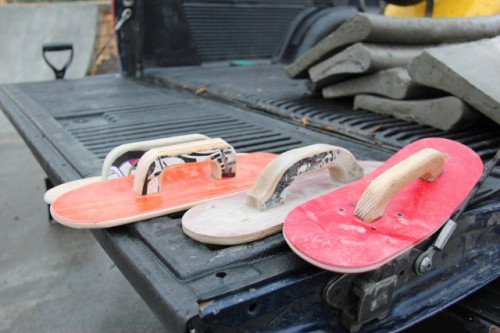





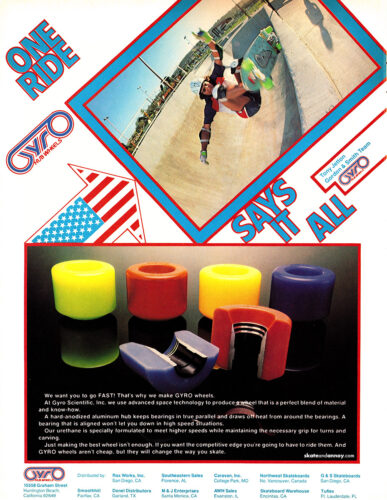




wanna start a company?
lets do it! too much fun making it , and then grinding it.
crete s the best
A couple of years ago we got to see some of the Arvada Army use this method for coping on Terrell’s pool. Awesome stuff! and lot easier than the “old fashion way”. 😀
Made mine the exact same way–most fun to skate for sure! Nice job!
I poured half the blocks on my ramp, and embedded marble counter top scraps in them. I used quick curing concrete mix and mine were done in an hour or less. I ended up making all of them in two days and installing and grinding the same week. Years later they are still holding up. Those trowels in the picture are rad. Homemade tools rule!
COuld you email me? I’m super confused about how to mix the concrete! I’ve built an elaborate ‘mould’ like in the ‘pour man’s pool coping’ website with rebar and 2″ PVC cut in half for the front part but am totally lost about what to put in a bucket to mix with water to result in ‘concrete.
If I buy the ‘bomite’ you used (or say Sakrete 5,500psi) do I still need to add ‘1/4 sand and 1/4 portland cement to 1/2 cement plus ‘enough water to make it like sludge or oatmeal’…??? or do I just add water to it? Does it already come with the sand and cement mixed in or??
It seems like you just bought that bag and added water and were good to go or am I wrong? I really don’t want to just make up the mix as I go along and end up with crumbly rocks for coping. I need it to be hard and solid. Anybody, I’ve read sooo many web pages and most allude to mixing (concrete, sand, agregate (reallY?), and cement to water)….I thought you just bought a high psi concrete, added water and were good to go. Please help, john in Vegas configuration1@gmail.com
Any tips for curved coping? Specifically bending the pic without creases.
Pvc not pic auto correct. Also is there a standard for radi?
Hi, I’m in the process of making a wooden 4ft ramp with tight transition. I want to put pool coping on the deck but I have no idea how i’ll attach it, please help me!!! Thanks!
-Chris
re: DIY concrete coping (NOT pool block style)
I’m looking to build a wooden quarter pipe. My idea for coping is to fashion what would look like pipe coping but have it be made of concrete. Question 1: has anyone ever done/tried/seen cylindrical shaped concrete coping that is very similar to pipe coping?
My plan:
1. get a section of 2″ pvc pipe. Rip in half on table saw.
2. Cut off a 1″ section from the end of that flat rebar mesh used for sidewalks and somehow fit it inside the pipe (if possible. If not maybe use something more like chicken wire tightly coiled on itself. Or maybe just use 2 pieces of rebar running next to each other kept about 1/2″ apart).
3. Drill holes in the PVC and insert J-style foundation bolts into the pipe. The threaded end of these will enable me to attach it to the ramp.
4. Put the 2 pieces of pvc pipe back together with the rebar of choice inside and the j-bolts inserted into the holes (and attached to the rebar with wire).
5. Hose clamp the 2 section together.
6. Stand the pipe on end and carefully pour concrete into the pipe (this will probably be much harder than it sounds).
7. Let cure. Remove the clamps and I should have a straight section of cylindrical concrete pipe coping.
Does anyone with any experience/expertise/common sense think this will/won’t work?
Thanks.